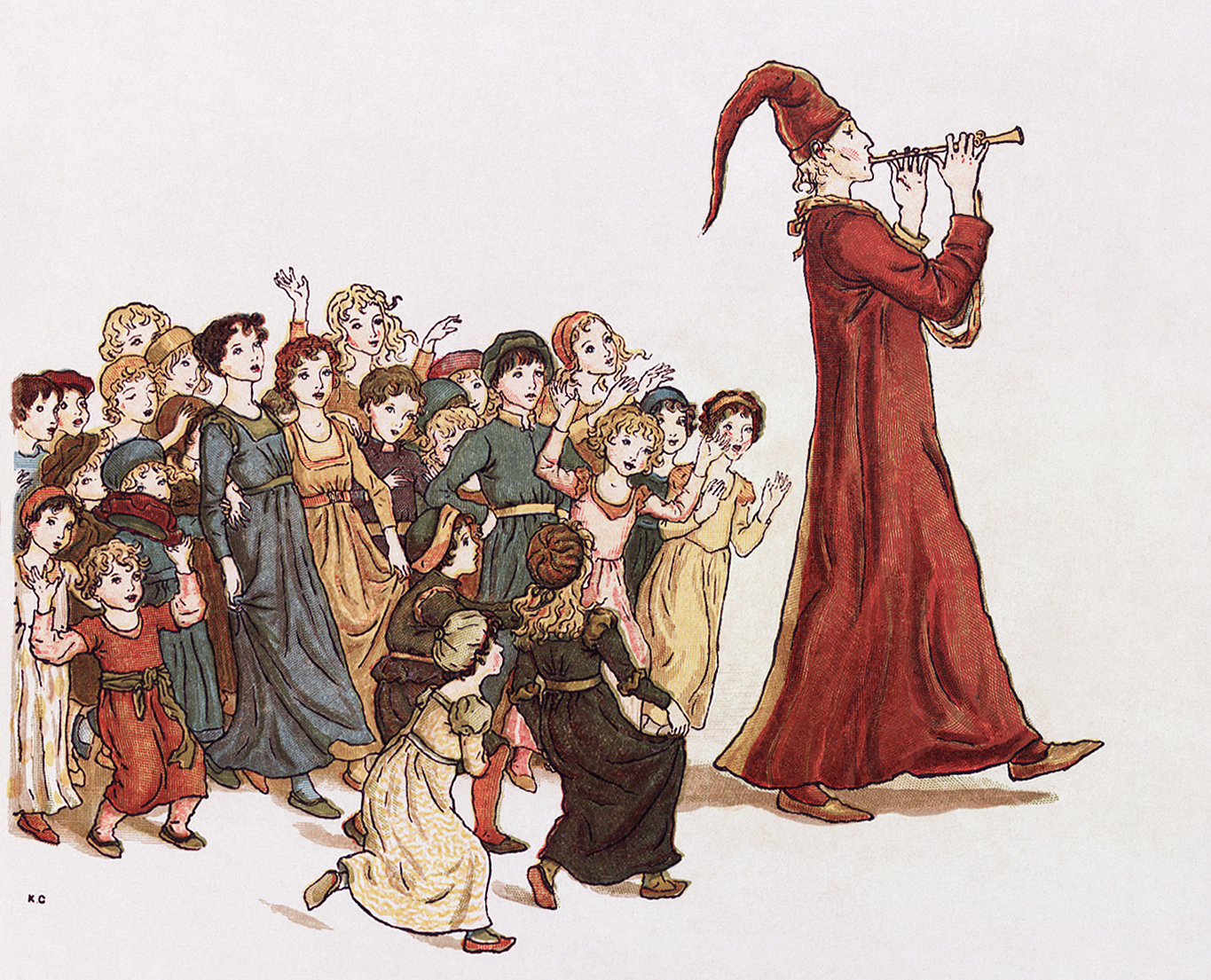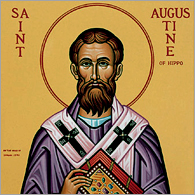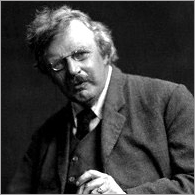Robert Sungenis claims to be on a mission from God. He wants you to believe that geocentrism is, and always has been, an official teaching of the Catholic Church. And he believes that convincing you and others of this will strengthen the Church’s standing in the world and bolster the faith of individual Catholics.
The problem?
 The Catholic Church doesn’t officially teach geocentrism and never has. And the tactics that new geocentrists like Sungenis use to try to convince the audience to the contrary ultimately undermine the very Church they claim to be helping. Basically, the position staked out most visibly by Robert Sungenis leads to the general undermining of the integrity of the Magisterium and will ultimately lead Catholics right out of the Church.
The Catholic Church doesn’t officially teach geocentrism and never has. And the tactics that new geocentrists like Sungenis use to try to convince the audience to the contrary ultimately undermine the very Church they claim to be helping. Basically, the position staked out most visibly by Robert Sungenis leads to the general undermining of the integrity of the Magisterium and will ultimately lead Catholics right out of the Church.
It’s like the story of the Pied Piper which, “describes a piper, . . . leading the children away from the town never to return” (link). The analogy is meant to make a rhetorical point, but there’s a serious side to it. To some confused Catholics, Sungenis and his fellow geocentrists seem to pipe an attractive tune of heroism and fidelity. On the surface, they appear to be great defenders of the “True Faith”. But in fact, by accusing the Magisterium of the Church of being completely derelict in its duty to teach the Catholic faith for centuries, they sow distrust in and dissent against the Magisterium, leading souls to trust and follow them instead. And that path leads right out of the Catholic Church.

www.radiolive.co.nz/Shipwreck-Tale-Royal-Charter/
In this first part of “Geocentrism: Tempest in a Teapot or Theological Shipwreck”, I focus on Sungenis’s absolutist claims about the alleged dire consequences of rejecting geocentrism, the conspiracy theories he concocts and the rash accusations he levels against various popes and the Magisterium itself. In the second part I highlight other geocentrists who deploy the same extremist rhetoric in support of their private dogma. In the third part I demonstrate that, while geocentrism itself isn’t heretical, the argument made by the new geocentrists concerning the alleged centuries-long failure of the Magisterium to uphold the Faith runs headlong into a position that the Church has declared formally heretical.
The Catholic Church Teaches 100% of Her Doctrines
Before looking in detail at Sungenis’s views, it’s important to state yet again that the Catholic Church does not simply cease teaching one or more of her solemnly declared doctrines, for centuries at a time. These are difficult and even confusing times in some ways— everyone can agree on that. But it is remarkable and inspiring that even during these difficult times, the Magisterium has never stopped teaching even one of her solemn doctrines. Period.
The geocentrists rummage around in the Church’s history, eager to find some other example of the Church ceasing to teach a doctrine after having solemnly proclaimed it. In every counter-example they cite—contraception, biblical inerrancy, usury, etc.—I have shown that the Magisterium continues explicitly to teach those doctrines, right up to the present day. I rejoice and take great comfort in that fact. It should make every Catholic’s heart glad that the Church continues to teach even the hard teachings. Many converts have been made from that fact alone.
Even staunch geocentrist Rick DeLano admits that, for him, geocentrism is the lone example of the Magisterium allegedly abandoning a doctrine of the faith for centuries (he’s had to admit that the only other one that is “arguable” is usury, but I have shown that the Church continues to condemn usury to this very day: see “The New Geocentrism: Excessive Interest in Usury”). There is, of course, a simple reason that they can’t find a single valid parallel. It’s because the Church does not stop teaching her solemn doctrines!
As I have shown elsewhere, the Fathers of the Church do not advance geocentrism as a matter of faith (see “Geocentrism and the Unanimous Consensus of the Fathers”). The Magisterium has never done so either. I have also shown that the actions of the Magisterium of the seventeenth century and later magisterial acts can be harmonized, without recourse to rash accusations or conspiracy theories, but rather by appeal to the Catholic Church’s own perennial rules of canonical interpretation. The Magisterium has formally ruled that Catholics are free to hold to the motion of the Earth (see “The Magisterium Rules: The Debate is Over” and “Geocentrism and Strict Canonical Interpretation”).
This won’t do for the new geocentrists. They insist that geocentrism has been and remains the official teaching of the Catholic Church. As we’ll see, by so doing they run smack into a real dogma of the Catholic faith, namely, the indefectibility of the Church.
The Overthrow of the Faith
Sungenis, in particular, has insisted over many years in the most absolute language that geocentrism has been presented so solemnly as a matter of faith and morals by the Fathers and the Magisterium of the Catholic Church, that a rejection of geocentrism represents the overthrow of the trustworthiness of the entire Catholic Faith.
For example, in 2007, Sungenis agreed readily with the statement that rejection of geocentrism represents, “Pretty much whole-scale overthrow of the foundations of our Holy Faith” (source). He insists in Galileo Was Wrong that the 1633 decree of the Holy Office against Galileo to this day applies to all non-geocentrists:
Note that the judgment is not directed merely against Galileo; . . . Hence, anyone who would adopt heliocentrism would automatically open themselves up to the judgment of formal heresy, based on this 1633 sentence (GWW3, 9th ed., p. 267f.)
 To Sungenis, the matter of geocentrism is a matter of faith and morals (source) and he insists that geocentrism has in its favor the, “strongest possible evidence for declaring it a dogma of the Church” (source). And he consistently presents the matter as if there’s no possible via media between his personal view and the complete demise of the Catholic Church. So, to Mark Shea, he casts the matter as if either his personal take on the Galileo affair is correct or the popes are “a bunch of bumbling idiots” (source). To Dave Armstrong he insists that either his personal take is correct, or the Church was “led by the Devil instead of the Holy Spirit” (source). And to one “Jordanes” he insists that if the Church made a mistake—even in an exercise in which she claims no infallibility—it undermines the Church’s entire claim to truth and “we simply don’t have the Catholic Church we have claimed to have” (source). It is, for him, an “all or nothing game” (source).
To Sungenis, the matter of geocentrism is a matter of faith and morals (source) and he insists that geocentrism has in its favor the, “strongest possible evidence for declaring it a dogma of the Church” (source). And he consistently presents the matter as if there’s no possible via media between his personal view and the complete demise of the Catholic Church. So, to Mark Shea, he casts the matter as if either his personal take on the Galileo affair is correct or the popes are “a bunch of bumbling idiots” (source). To Dave Armstrong he insists that either his personal take is correct, or the Church was “led by the Devil instead of the Holy Spirit” (source). And to one “Jordanes” he insists that if the Church made a mistake—even in an exercise in which she claims no infallibility—it undermines the Church’s entire claim to truth and “we simply don’t have the Catholic Church we have claimed to have” (source). It is, for him, an “all or nothing game” (source).
According to Sungenis, Catholics who don’t accept his spin on the matter are denying the inerrancy of Scripture and hence putting their very salvation in jeopardy:
I know that the only solution to it is to show that the Church was right, not only in condemning heliocentrism and Galileo, but was also right in considering cosmology a matter of Scriptural truth and ultimately of salvation itself, since a rejection of Scriptural truth and an acceptance of heresy will lead to damnation. When the Church committed herself to condemning heliocentrism as “formally heretical” at the 1633 trial of Galileo [NB: this claim is false—see here], there was no turning back. Geocentrism, because it directly reflected the inerrancy of Scripture, was now indirectly made a matter of salvation, for he who rejected the Church’s decree and the truth of Scripture was putting his salvation in jeopardy. . . . So if that Church is wrong on just one issue that it authoritatively and consistently disseminated to its people (as is the case of geocentrism [NB: this claim is false—see here), then it simply cannot be trusted on any issue. . . . So if one denies geocentrism, he besmirches all three branches of the Church’s authority.. . . . Now, if that is not a matter of “salvation,” what is? (link).
While Sungenis has, on occasion, attempted to soften this rhetoric when it became clear that it really wasn’t selling in Peoria, this absolutism hasn’t been tempered over the years. This is what he really thinks. As recently as January 2014, Sungenis stated, “What is required is that Catholics understand and teach that geocentrism was officially taught by the Church and that that teaching has never been officially abrogated” (link). In February 2014 he deployed this purple prose:
Like a dragon that must be cast into the bottomless pit and sealed over so that it cannot escape, so the magisterium of the 17th century, given the task by God himself to set the precedent for ages to come, viewed the “pernicious” doctrine of Galileo as one of the greatest threats ever to face the Church. Like a cancer waiting to metastasize, the doctrine of Galileo had to be “wholly rooted out” before it sucked the life out of the Church (Debunking David Palm Phase 3).
In the 9th edition of Galileo Was Wrong, Sungenis casts the allowance and adoption of non-geocentric views as the very foundation of a great apostasy from the faith, which affects not just individuals but the very Magisterium of the Catholic Church itself:
[T]he people have been led astray by false teachings. . . . These examples, however, are not to say that those who do not believe in geocentrism are either no longer individually faithful to the Catholic Church or that they are an integral part of the apostasy. The masses cannot be blamed for what they have been taught by their authorities . . . [O]ne of the signs of the general apostasy predicted by Holy Scripture will be a general and pervasive turning away from the previously accepted truths of Scripture and Tradition. The mass rejection of geocentrism is just one sign of that eventuality.” (GWW3, 9th ed., pp. 448, 450; my emphasis).
A bit further on comes a quote from Wolfgang Smith, cited approvingly by Sungenis:
Nonetheless one must insist, in light of our preceding analysis, that the contemporary cosmology, in any of its forms, is not in fact compatible with Christian doctrine. To the extent, therefore, that Rome has embraced a scientistic outlook, it has compromised the true teaching of the Church: this is the crux of the matter. Call it human failing, call it “political correctness,” call it apostasy – the fact is that Rome has become “a house divided against itself.” (GWW3, 9th ed., p. 451.)
Yet Another Conspiracy
How can this be? According to Sungenis, the Church has been betrayed by the popes themselves. According to him, for hundreds of years Christ’s vicars have utterly failed to protect the integrity of the Catholic faith. We’ve seen that he considers heliocentrism to be a doctrinal cancer, but we see in Galileo Was Wrong that, according to him, the papacy itself is now diseased:
We can see clearly how the Big Lie is developing. It will spread like a cancer through the Holy Office and eventually to the papacy itself. It is analogous to Satan twisting what God said to Eve in the Garden of Eden…” (GWW3, 9th ed., p. 341; my emphasis.)
Sungenis casts Pius VII—who decreed that there are “no obstacles” or “any difficulties” for Catholics to reject geocentrism and hold to the motion of the Earth—as a pope in his dotage, labelling him as “infirm and compliant” and then accusing him of “capitulation”. He claims that the Pope was being actively manipulated by nefarious individuals while only Sungenis’s hero, Fr. Filippo Anfossi, the Master of the Sacred Palace, stood up for the truth:
On the one hand, the author of the March 28, 1820 Acta refers to Pius VII’s acknowledgement of the Holy Office’s allowance for [Canon Giuseppe] Settele’s imprimatur; on the other hand he emphasizes what he sees as the “indolence and dullness of this same Pontiff.” That such a scurrilous statement about the pope would appear in the Acta is quite surprising, nevertheless, it does suggest that Olivieri [Commissary General of the Holy Office] and Grandi [theological consultant to the Holy Office] were strong-arming both the pope and the Holy Office against Anfossi and taking advantage of the pope’s kindness and ill health (GWW3, 9th ed., p. 373.)
Sungenis has made many false charges against Fr. Olivieri, while making blunder after blunder himself (see here and here.) But what makes this latest charge so preposterous is that Sungenis has flipped this entry in the Acta of the Holy Office completely on its head. If one reads the whole entry, it is Sungenis’s hero Fr. Anfossi who is excoriated and criticized. To the extent that it could be taken as critical of the Pope, it is to express the opinion that Pius VII was being far too lenient with the intransigence of Sungenis’s hero, whom it blames for having brought “disgrace and scandal to the Holy See” for being “stiff-necked” and for displaying “very false judgment” (see “Sungenis, Pius VII, and Fr. Anfossi: Turning the Evidence on its Head” for more details.)
Thus there is no evidence for Sungenis’s claim that, “Olivieri and Grandi were strong-arming both the pope and the Holy Office against Anfossi”. As he so often does, he has made this conspiracy up out of whole cloth. Despite Sungenis’s claims of conspiracy, there is no evidence that Pope Pius VII was anything other than well-informed and willing when he, “decreed that no obstacles exist for those who sustain Copernicus’ affirmation regarding the earth’s movement in the manner in which it is affirmed today, even by Catholic authors” and later when he directed the Holy Office to attach canonical penalties to any Roman censor’s failure to approve books presenting non-geocentric views (see “The Magisterium Rules: The Debate is Over”).

Wikipedia Commons
Sungenis’s most severe censure is reserved for Pope Gregory XVI, formerly Fr. Bartolomeo Cappellari before his elevation to the papacy. His ire is particularly ironic considering the fact that Gregory XVI is widely admired in traditionalist Catholic circles, especially for his encyclicals Mirari Vos and Singulari Nos, which condemn religious indifferentism and liberalism. Sungenis casts him as essentially a co-conspirator with Fr. Olivieri, for, he claims, “Cappellari took Olivieri’s deceptive ‘science’ bait hook, line and sinker in 1823; and he apparently couldn’t wait to make it official in clandestine silence in 1835” (GWW3, 9th ed., p. 384).
Sungenis declares the Pope fully culpable — “Gregory XVI’s little quip to Settele in 1833 . . . shows that he knew exactly what he was doing. He was going to start the Earth turning whereas 1835 years prior, under the vigilance of the tradition before him, the Church kept the Earth still” (ibid., p. 387). The charges he levels against the Holy Father include “an utter disrespect for his patrimony and his papal predecessors”, “his unprecedented upheaval of Catholic tradition and authority”, and “the blatant contradiction he set up between himself and Paul V and Urban VIII” (ibid., p. 384).
According to Sungenis, Pope Gregory XVI, “made his papal predcessors [sic], not to mention the Church Fathers, the Council of Trent and its Tridentine Catechism, to be ignorant fools” (ibid., p. 385), and “He probably thought he made the Church twice as strong, but in reality he only made it a hundred times as weak, for now we are saddled with a Church that contradicts herself” (ibid., p. 384). Sungenis laments that, “Things would never be the same after Gregory’s fateful decision” and labels it “a travesty beyond belief” (ibid.).
In the final analysis, according to Sungenis, “Gregory had a simple choice; either he could accept the God of his forefathers or accept the gods of modern science. He chose the latter” (ibid., p. 385) and thus “Newton’s apple and Satan’s apple accomplished the same task of exposing the faithlessness of God’s chosen” (ibid., p. 387).
It would seem that Pope Gregory XVI was like a foolish little pig: “the huffing and puffing of science against the Church in the days of Gregory XVI is not unlike the nursery rhyme [sic] of the Big Bad Wolf. If only the Church had kept its house of brick instead of trading it for a house of straw” (ibid.) “It is no surprise, then,” says Sungenis, “that during his stint [sic] as Consultor and Pope . . . all hell broke loose on the Church . . . Things would never be the same after Gregory’s fateful decision” (ibid., p. 385). For Sungenis it all comes down to this:
The simple fact is that the Church became intimidated by the claims of science and decided to sacrifice her tradition and her legacy for the pottage of “the opinions of modern astronomers” (ibid., p. 384).
Cowards, All Cowards
Lack of courage is Sungenis’s stock explanation for how pope after pope and all the bishops in communion with them could have for centuries allowed the faithful to believe what he holds to be a “formal heresy”. Christ’s vicars and all the successors to the apostles are scared—they’ve been “intimidated” into silence, forced to “cower in obeisance to popular science”. But the brave Sungenis will come to the rescue of these pathetic popes and bishops:
I intend to help quell that silence by showing the Church that she needs to reinvestigate this issue; and when she does she will find that the Church of Tradition was right all along, and that it is the modern Church’s responsibility to support and defend her, not cower in obeisance to popular science (link).
A moment’s thought renders this narrative ridiculous. The popes and bishops whom Sungenis presents as “intimidated” and “cower[ing] in obeisance to popular science” are the same popes and bishops who have courageously faced the ridicule and mockery of a hostile world as they have taken an uncompromising stand on core moral and doctrinal issues such as abortion, contraception, the true nature of marriage, and male-only ordination! Somehow, we are supposed to believe that the issue of geocentrism alone is such that neither Christ’s vicars nor the successors to the apostles could withstand the pressure and hold to the truth.
Note that Sungenis cannot reasonably limit the criticism only to Pius VII and Gregory XVI. As I lay out in more detail in “Geocentrism and the First Vatican Council”, his condemnatory censure would have to be levelled also against Bl. Pius IX and the fathers of Vatican I, against Leo XIII for his encyclical Providentissimus Deus, against Benedict XV for his encyclical In Praeclara Summorum, against Pius XII for his encyclical Divino Afflante Spiritu, against John Paul II for, among other things, his address to the Pontifical Academy of Science, and indeed against all the popes for the past two hundred years for allowing what Sungenis considers a “formal heresy” to spread completely unchecked, without one word of warning to the faithful.
One may reasonably ask: just where is the Holy Spirit in this geocentric scenario? How is it that the same Holy Spirit Who preserves the Church in the truth of all her other doctrines and upholds the shepherds in the face of the massive opposition of a hostile world can’t seem to convince them that the motion of the Earth is an essential part of the deposit of Faith?
Of course, there is a much simpler alternative, namely, that the motion of the Earth and its physical centrality are not part of the deposit of the Faith and that, therefore, it is the geocentrists who have erred, not the Magisterium.
Conclusion:
This “all or nothing” approach has been staked out by Sungenis for over eight years now, including the most recent edition of Galileo Was Wrong. When he’s confronted with his most extreme rhetoric, he says that he’s not really seeking to bind the conscience of Catholics: “I have no authority to bind anyone or to declare to anyone that they must believe in geocentrism.” He claims that he’s only informing Catholics and seeking to “reveal to the Church” that it needs to reevaluate this issue.
We’re expected to believe that he’s not seeking to bind the conscience of Catholics to geocentrism. He’s merely telling them that their very salvation depends on it, they’re guilty of heresy if they don’t believe it, that the papacy has been infected with a Big Lie, that popes and bishops have for centuries been cowards and derelict in their duty to warn the faithful away from what Sungenis considers a cancerous “formal heresy”! That’s all.
Of course, this whole approach violates Canon 212, which insists that any such public expression of one’s opinion must be “without prejudice to the integrity of faith and morals” and be done “with reverence toward their pastors”. Sungenis’s presentation of the alleged failure of the Magisterium, for centuries, to protect the faithful and accurately pass on the true Faith fails on both counts. On the contrary, the view of the Church and the integrity of the Magisterium pushed by Sungenis are corrosive to the faith of ordinary Catholics. Like the Pied Piper, Sungenis plays a tune that will only lead them into spiritual peril.
In Part 2 of “Geocentrism: Tempest in a Teapot or Theological Shipwreck”, I’ll show that while Sungenis is the most prominent Catholic geocentrist to take this extremist position, he is not alone.
Go to “Geocentrism: Tempest in a Teapot or Theological Shipwreck, Part 2”
Sources:
Hence, geocentrism, as the Church has taught by her popes, IS a matter of faith and morals, and that’s why Pope Urban VIII declared that heliocentrism is a “formal heresy” in 1633 [NB: this claim is false—see here]. I didn’t say it, Emmanuel, the pope did, so you’ll have to live with it. (Sungenis,http://galileowaswrong.com/debate-on-geocentrism-part-1-2/)
The unique quality of geocentric doctrine is that it possesses what the Church would consider the strongest possible evidence for declaring it a dogma of the Church. It has: (a) an indisputable consensus among the Fathers and medievals; (b) Scripture’s exclusive testimony, in dozens of passages written in various ways, that declare that the sun moves and the Earth is fixed; (c) high level magisterial decisions, enjoined, facilitated and authoritatively endorsed by several popes, that declare heliocentrism a formal heresy, opposed to Scripture, and a pernicious error [on this claim, see here]. The only thing left to convince a doubting Thomas is the scientific evidence (GWW3, 9th ed., p. 267)
Obviously, the embarrassment comes from the Catholic who makes the 17th and 18th century popes and cardinals look like a bunch of bumbling idiots who didn’t have the common sense to stay out of the cosmos, much less give a fallacious assessment of its motions. It is precisely Mr. Shea’s “forget-the-tradition” apologetics that has encouraged unbelievers to conjure up every excuse for their sin and rejection of the Catholic Church by using the excuse; “Well, if the Church got it wrong on such a simple thing as whether Scripture teaches that the earth moves, why in the world should I trust it with my soul and any other interpretation of Scripture?” “If they were so blind when dealing with Galileo, why should I trust it when it tells me not to practice contraception or homosexuality or remarriage after divorce?” Yes, indeed, Galileo has become their perfect excuse and they have been using him for nearly 500 years. . . .
Unfortunately, few Catholics, if any, never considered that maybe, just maybe, the Church was actually led by the Holy Spirit to condemn heliocentrism, just as it was led by the same Spirit to condemn every other heresy that came its way. That’s an apologetic I can be proud of; an apologetic that takes away all the “embarrassment” when we face the world and its excuses for sin.
The embarrassment comes when I hear people like Mark Shea implicitly teach that somehow the Holy Spirit was on vacation in the 17th and 18th centuries, . . . .
Then, of course, we have Mr. Armstrong to follow suit with his desire to obfuscate the issue even more and do the same dance as Mr. Shea into the depths of demagoguery with such calculated comments as: “Are they [geocentrists at a 2010 conference] going to expose how NASA faked the moon landings and how they use laser beams to make crop circles to secure more federal funding, too? Riveting! Cutting Edge!,” [NB: see here] and who then also claims that by critiquing the popular apologetic that faults the Church and praises Galileo I am “sowing distrust and discord.” . . . Ironically, like Mr. Shea, Mr. Armstrong writes detailed books on how Catholics should accept Catholic tradition against the Protestants who believe in Sola Scriptura, yet when it comes to the Church’s almost two millennium tradition that teaches geocentrism, suddenly Mr. Armstrong loses faith in the Church and believes that cameras sent up by godless scientists prove that the Church of the 17th and 18th centuries was being led by the Devil instead of the Holy Spirit. That’s what I call an “embarrassment.”
Even more dangerous is the fact that, if we claim the Church of the 17th century made a mistake in condemning Galileo and heliocentrism, yet it remains a fact that the prelates of that 17th century Church insisted they were guided by the Holy Spirit to do so [NB: Sungenis give no evidence for this.], then we find ourselves at odds with our own Church, and the Holy Spirit. The fact is, THEY came before us, and we are subservient to their decrees; they are not subservient to us and our opinions. . . .
If we say the 17th century magisterium erred, then it is a fact that the Holy Spirit allowed the Church to err, and if the Church can err in what it then declared as a matter of faith and morals (i.e., it was a matter of faith because Scripture taught the earth didn’t move, and Scripture cannot lie), then it can also err in matters of faith and morals today, and if that is the case then we simply don’t have the Catholic Church we have claimed to have. This is an all or nothing game, gentlemen. We can no longer sit on the proverbial fence and shun one period of our official magisterium as seriously misguided and accept the unofficial musings of another period as correcting the former, especially since modern science gives us no help in substantiating the latter.
Jacob: Are there other theological ramifications that come with accepting the heliocentric view? Other than undermining inerrancy?
Robert: Yes. One also undermines the papacy, since if three popes (and one in a papal bull) approved the condemnation of heliocentrism, then to ignore those authoritative statements besmirches the divine guidance and authority of the papacy. In reality, however, since there was never a formal and official retraction of what Paul V, Urban VIII and Alexander VII condemned as a heresy, then the Church has never, officially, reversed their decrees. The only other thing that happened was that Pius VII had taken Copernicus’ book off the Index (after certain revisions were made), but he, nor any other pope, reversed the declaration of Alexander VII that a moving earth was “heretical” and “opposed to Scripture.”
It also undermines Tradition, since it is a fact that ALL the Fathers were geocentrists (not merely because they didn’t know any better, but because they specifically rejected the doctrine of heliocentrism propounded by the Greeks). Also, all the medieval theologians, including Aquinas, were geocentrists. To reject them all is to reject Tradition.
So, we have a rejection of the inerrancy of Scripture; a rejection of the divine guidance and authority of the papacy; and a rejection of established Tradition in consensus. . . .
Jacob: Pretty much whole-scale overthrow of the foundations of our Holy Faith.
Robert: Yes, and then this begins to allow Scientism to ascend the throne and make itself appear virtually infallible (when in actuality, Science is more puzzled today than in medieval times). (https://sites.google.com/site/sungenisandthejews/interview-with-a-geocentrist)
There can be absolutely no doubt that Sungenis believes that geocentrism is the official teaching of the Catholic Church, that it is a matter of faith and morals, and that its rejection results in the veritable overthrow of our entire Faith. This puts him directly on a collision course with a real dogma of the Catholic faith, the indefectibility of the Church. Arguably, Sungenis’s position is itself heretical.



